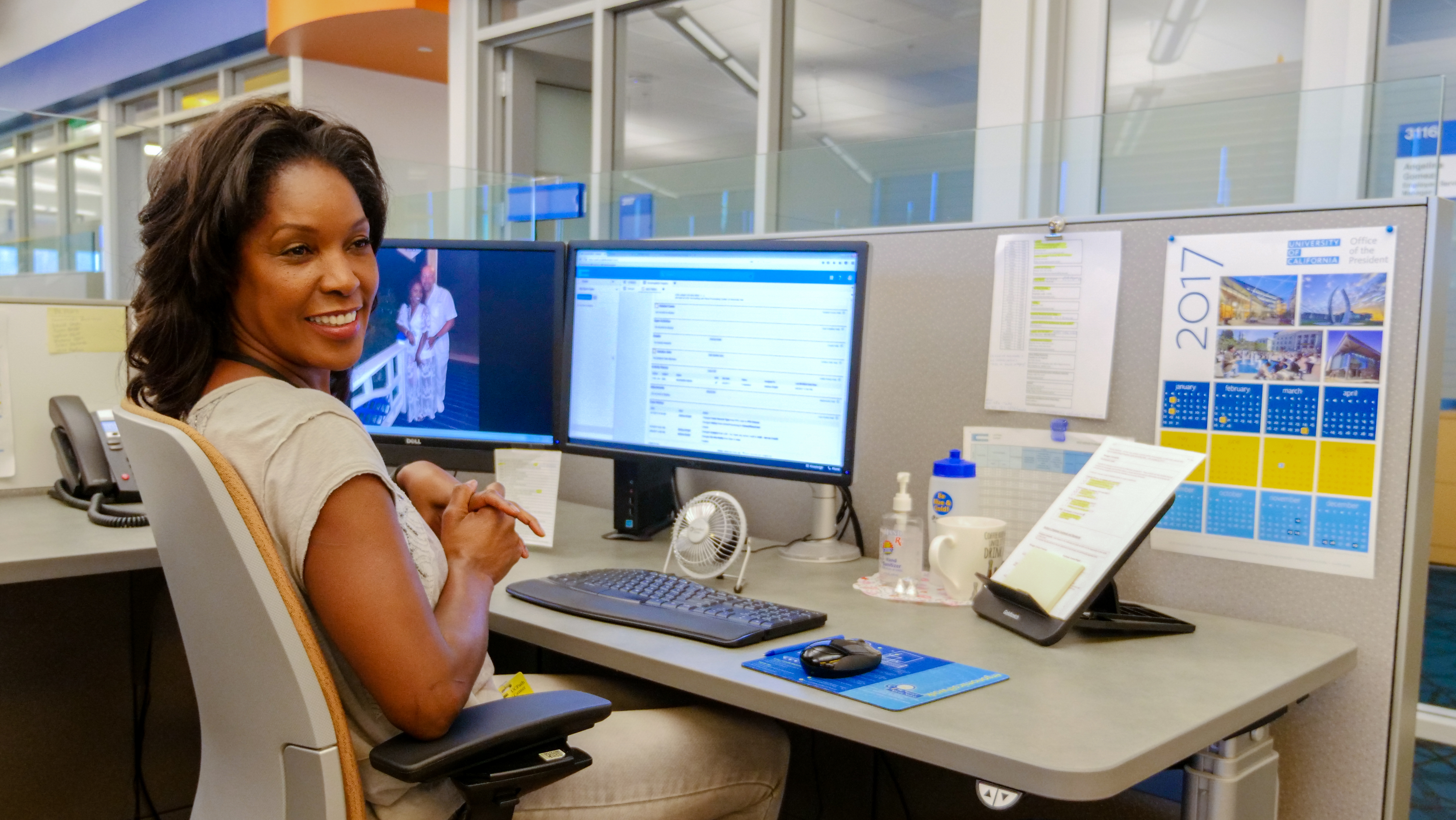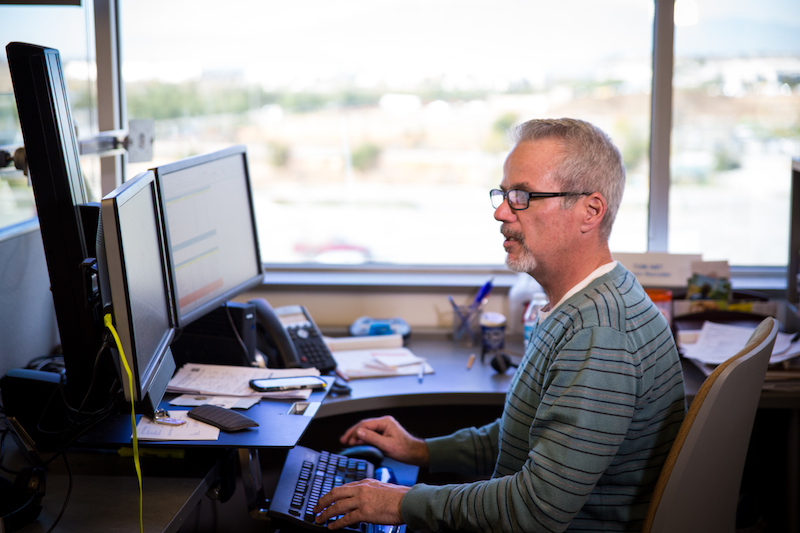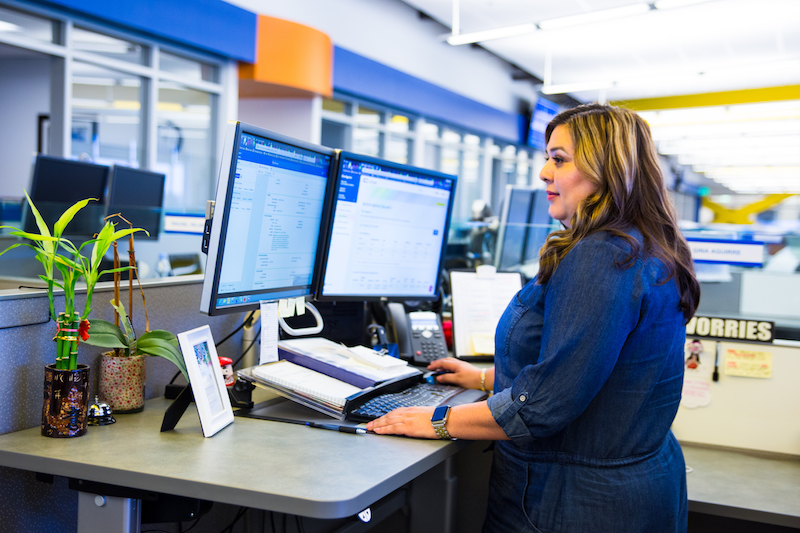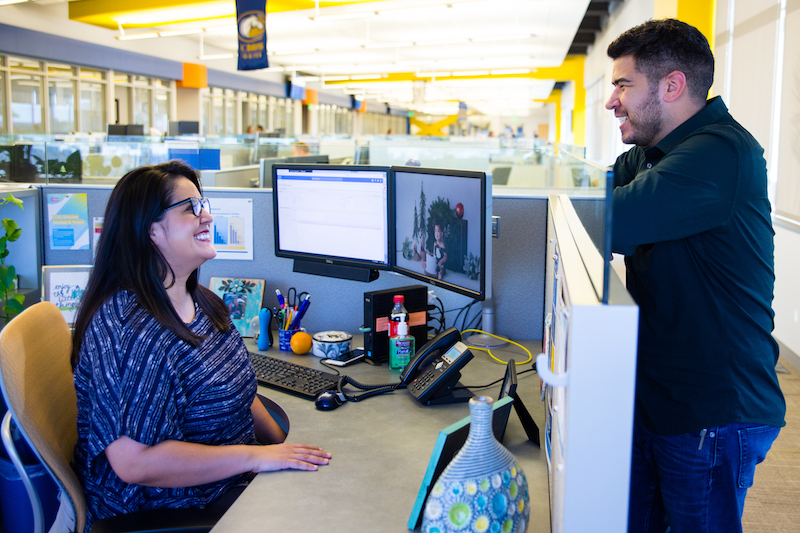The University of California, Office of the President (UCOP), including the UCPath Center in Riverside, has a dedicated ergonomic program, which focuses on the health and wellness of their employees. As part of the UCPath Center’s total compensation package, UCOP is dedicated to an employee’s day-to-day work experience.
The practice of ergonomics helps to design a workstation, which may help reduce the risk of workplace injuries. According to UC Berkeley, jobs with computer use often involve repetitive motions, and/or awkward body postures. This may lead to potential issues such as eye strain, back and neck pain, joint problems and headaches. Employees of the UCPath Center have access to ergonomic solutions such as standing desks, adjustable office chairs, and on-call advisors to provide individual support.
The following are a few tips from multiple schools and departments of the University of California to provide you with ergonomic support while you are working at your desk or in front of a computer.
Tip 1: Keep an even distribution of weight while you are seated
If you spend the majority of your day in an office chair, there are a few ways you can maximize your level of comfort. As you are seated, make sure you are sitting all the way back in your chair with your back against the backrest. Your knees should be aligned or lower than your hips with your feet supported by the ground or a footrest. This will help evenly distribute the weight across your legs, hips, and back so you are not putting additional pressure on one part of your body and increasing your risk of overexerting certain muscle groups.

Tip 2: Improve your posture to reduce the risk of neck pain
To avoid a sore neck, keep your head aligned over your shoulders. When your head and shoulders are hunched forward, you are more likely to strain the muscles and ligaments that support your neck. Maintain a supportive posture by keeping your shoulders back and head upright. This good posture will help your joints stay comfortable at work and reduce the chances of a stiff neck and back.

Tip 3: Maximize the placement for your monitor and keyboard
Strategic placement of your monitor and keyboard can help to reduce poor posture, tense shoulders and strained wrists. In order to prevent bending your wrists as type, keep your keyboard at a distance that allows your elbows to remain bent at or near a 90 degree angle. Your keyboard should lie flat or at a negative angle to promote a neutral wrist and hand posture. Your monitor should be no closer than 20 inches from your eyes, and positioned so that the top of the screen is slightly below your eye level. This will help reduce any strain on your neck and shoulders.

Tip 4: Give your eyes a break
According to UCLA Ergonomics, “Computer workstations present complex visual needs. Challenges can include uneven lighting, reflections and glare, and prolonged use of the eyes.” To reduce agitation or additional tension from overuse of your eyes on a computer screen, you can follow the “20-20-20 rule.” For every 20 minutes that passes, look 20 feet away for 20 seconds and allow your eyes to rest as they look away from your monitor.

Tip 5: Have good back support
To promote optimal comfort in your chair, the height of the backrest and lumbar support should be adjusted to support the curve of your lower back. If you do not have an office chair with these adjustments, you can purchase seat cushions online to provide you with that extra lumbar support to protect your lower back.

When you put these simple tips into place at your workstation, you will notice an improvement not just in your physical well-being but you are also likely to have an increase in energy, productivity and quality of work. The practice of ergonomics in a work environment also helps to promote a positive work culture and employee experience.
Learn more about the workplace culture at the UCPath Center.
Access to ergonomic work options a one of the many benefits employees realize when joining the UCPath Center team. Business Analyst Esperanza Sanchez credits the extensive benefits program for her desire to work at the UCPath Center.
“For me, one of the main reasons why I wanted to come to the UC system was to be able to have a total compensation package that was competitive,” Esperanza said. “When I looked at the benefits package, I realized it was something for me.”
If you would like to start a career at the University of California, apply to one of our open positions at the UCPath Center today.


